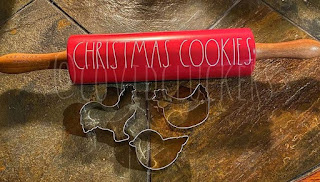The Covid Cluckers have a problem. A between $40-80 a month problem. Our run is sand and is devoid of bugs and plants. During the day the girls are in their run, since unsupervised free ranging is not an option (thanks Mr. Coopers Hawk). Chickens need to keep their minds and beaks busy or else you have problems. Searching for things to peck and eat are their number one task during the day. Enter dried mealworms.
My girls are actually slightly UNDERWEIGHT if you can believe that! Our vet said they needed to each gain a half pound (an eighth of their body weight! That's a lot for them!) Now part of that issue was worms. The other part is that its very hot and they don't want to eat. So right now, treats aren't an issue and we are starting to molt, so higher protein treats are welcome. Again...enter mealworms.
They are so expensive, so I turned to my mother, Granny Claw. My mom has been raising mealworms for years. She gives them to her song birds, and yes when she comes to visit she brings them for the Cluckers. Recently, she brought me a batch of worms, pupa, and beetles. So as creepy as it is to me, I have started the process of raising mealworms for the Cluckers. The things I do for my chickens...
Here's what you will need:
Oatmeal or wheat chaff
Containers (at least 3) with lids that have holes poked in them (I used plastic shoe boxes from the dollar store)
A spaghetti strainer scoop
A dark place to store said containers
Leftover Veg (this is where they get their water and nutrition)
Toilet paper Tubes
Container 1:
This will contain worms. You will have to put your oatmeal bedding down. Add in veg a few times a week. They will eat this. Add a toilet paper tube for smaller worms to hide in. Sift to take out the pupa.Container 2:
This is where the pupa should go. You will still have the bedding, toilet paper tube, and veg. You will have to sift regularly to take out the beetles.
Container 3:
This is where the magic happens. Just kidding. Basically your beetles will breed and create eggs that will hatch into worms. You will have to sift the worms out or put the beetles into a new container and let this group grow out. They are very small. Again, bedding, tube, and veg. You then move the worms to Container One and the cycle begins again.
Things to watch out for:
Too much water. This comes from adding too many veg and the bedding becoming wet. This will cause mold and kill your bugs.
Too little water, not enough veg. This will cause cannibalism and kill your bugs.
Too much light...They don't like the light, a shady spot in the room works or your basement.
They stink. Not gonna lie, they have an odor.
We just started today, so we will let you know how it goes. Your birds will love the live mealworms and knowing what they've been fed will give you a piece of mind. I've heard that coffee bedding is another option, and I will explore it.



























